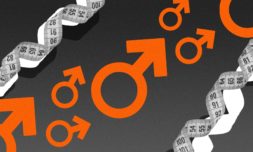As the worlds of incels and gym nuts collide, the impacts of this are not only concerning for women, but for the susceptible men whose wellbeing is at stake as a result of these trends.
By now, I’m sure you’ve heard of the infamous red pill community, whose members rule the online manosphere.
Incels reign supreme in this space, the term a portmanteau for ‘involuntarily celibate,’ which describes a person (usually male-identifying) who deems their lack of sexual activity a reason to resent those (usually women) who are sexually active.
A reference to the 90s blockbuster film The Matrix – ironically co-directed by two trans women – being ‘red pilled’ means channelling this hatred into believing that men exist in a reality in which women run the world without taking responsibility for it.
On the contrary, the ‘blue pill’ reality sees women’s oppression and the absence of equal opportunities in comparison to men acknowledged.
This is what incels would call ‘The Matrix’ and what I would call ‘true lived experience backed up by stats and epistemology.’
By and large, the manosphere (a digital realm of resources promoting misogyny and anti-feminist discourse under the guise of homo-social bonding) is made up of incels, whose goal is to exact revenge on women who they think are torturing them through rejection.
Still, it’s yet to be regarded as a form of terrorism and still, misogyny is yet to be legally classified as a hate crime, despite the fact that both have been the drivers behind recent killing sprees within the context of femicide.
The most notable example of this took place in 2014, when Elliot Rodger murdered six people and injured 14 in Santa Barbara after writing a manifesto claiming he was jealous of ‘Chads’ (conventionally attractive, sexually active men) and resentful of ‘Staceys’ (conventionally attractive, sexually active women). That same year, a teenager in the UK stabbed three women in three weeks as an ‘an act of revenge because of the life they gave me.’
At this point you’d be forgiven for despairingly exclaiming ‘ALL MEN,’ but there is a certain nuance to the insidiousness of incels and manospherical misogyny.
As well as ‘pick-up artists’ who give women a generous seven hours to get comfortable before attempting to manipulate them into sleeping with them, we now additionally have, drumroll please, ‘gymcels.’ Another portmanteau – admittedly not a very clever one – these are (mostly) men who obsessively go to the gym to work on their bodies.
For some, it’s a way to avoid being branded an incel, the idea being that the more muscle they have, the more attractive they’ll be to women and the more likely they’ll get laid. For others, expending energy at the gym is an alternative to sexual activity, with ‘lifting’ a solution to their rage and poor self-image.
This subgroup is often dubbed ‘MGTOW’ (men going their own way) because it includes those who’ve decided to reject women all together to deal with their self-perceived feelings of rejection.
Whether they go the gym to attract female attention or to distract themselves from the absence of women in their lives, gymcels are also frequently the most susceptible to what’s become known in the incel community as ‘bio-hacking’ or ‘looksmaxxing.’
This usually involves some sort of performance enhancing drug which gym-goers and athletes have been toying with for years.
Currently, The Global Performance Enhancing Drugs industry is valued at USD 0.40 billion and while research suggests that steroid abuse is on the up amongst young women, men continue to account for the majority of users.


















